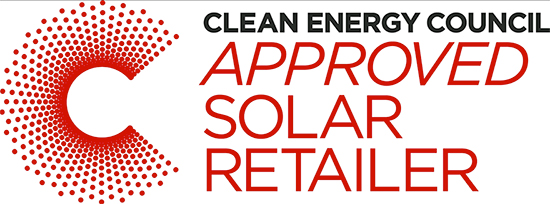When you add batteries to your solar system you can take control of your energy and save money. If you are in the Bendigo or surrounding area talk to us about adding batteries to your existing system. You may be just considering, still learning about what solar is all about or ready to start, that’s ok we’re here to help. We have been designing Solar systems in Bendigo and central Victoria for over 15 years, so we know what we are doing. More importantly, we know what we can do to help you enjoy the benefits of solar.
Here are some questions that we often get from people who are interested in Solar or Adding Batteries to their existing solar system. We hope they help.
What is a feed in tariff?
A feed in tariff is the amount of money that you receive from the electricity company when your solar system sends (feeds in) electricity to the grid. That is when your home or business has used all the solar power your system has generated and the excess energy goes into the grid.
Will I lose my 60 cent + feed in tariff if I make a change to my existing solar system?
Yes – If you add extra panels
Yes – If you add an extra or larger inverter
No – If you replace a faulty inverter of the same size
No – If you replace a faulty panel of the same size
No – If you add batteries to your existing system
Will I lose my 6 cent + feed in tariff if I make a change to my existing solar system?
No – If you add extra panels
No – If you add an extra or larger inverter
No – If you replace a faulty inverter of the same size
No – If you replace a faulty panel of the same size
No – If you add batteries to your existing system
NOTE: For any changes to the size of your solar system you will need to have approval from the Network provider.
What is an add-on Solar Battery power system?
An add-on Solar Battery power system (also called Hybrid or Battery Backup) has the capability to produce energy from solar panels and store it in the batteries for use at a later period. It mixes several components (Solar, Batteries and the electricity grid) to produce an energy system to power your home or business. The system also has an intelligent management that balances battery levels, household power usage and grid back up without any input from the home owner.
So how does an add-on Solar Battery System work
It works like a grid tie solar system however with the addition of batteries it gives you more control over what you can do with your power. A good analogy of a battery in this application is like running your home on a generator except you are not using any fuel. What happens is as you make energy from the solar panels the new components, (inverter charger and batteries) allow you to either store the energy in the batteries, use the energy for your appliances in the home or feed the energy into the grid.
What is energy storage?
When we say “store the energy” we mean that the energy produced from the solar panels is used to charge the batteries so that they are ready to be used whenever they are needed. We call it storage because the batteries that are charged can be called upon at any time to power your home appliances. Thus, we say we are storing the solar energy. Really all we are doing is recharging the batteries. Just like you would for a mobile phone device. You charge it over and over so you can keep using it.
What is an off-grid system?
An off-grid system is an energy system that is completely non-reliant on the electricity grid. It is often more complicated than a grid connected Solar Battery system as they use more components to compensate for the grid not being there. Because there is no grid, a backup energy supply (generally a generator) is needed so that you never run out of power. Also, it will generally require more batteries so you can store more energy.
What is the difference between an add-on Solar Battery System and an Off-grid system?
An add-on Battery System will normally remain connected to the grid for additional energy supply, where an off-grid system is completely shut off from the grid. Another difference is the components needed for the off-grid system are more comprehensive and will generally cost more to set up because there is no reliance on the grid.
What are the components of a Solar Battery system?
Add-on Solar Battery systems need the following:
- Solar panels to attract the energy from the sun.
- An inverter to convert the DC current to AC current for your home or business to utilise.
- A battery bank to store power for later use.
- A battery management system. This device manages your power system, delivering power required to your home, keeping the batteries charged.
- A monitoring system. This works with the battery management system to coordinate supply and storage of power for your individual home needs.
Why have an add-on Solar Battery system?
Add-on solar battery systems give you control of your power. You also get the assurance of stable electricity either from electricity grid, the solar or the batteries. When the grid has issues, you can switch over to your own battery reserves. Grid connected add-on solar battery systems are also much cheaper than an off-grid system and don’t require diesel generator backup. With the Enphase smaller module systems, you can have a small system that gives you just what you need.
With the Tesla Battery you will require 4-5kW of solar Panels to effectively charge the battery. The Tesla Battery can store enough energy to supply 14kWhs a day which is the average power use of most homes.

 Solar Calculator
Solar Calculator

